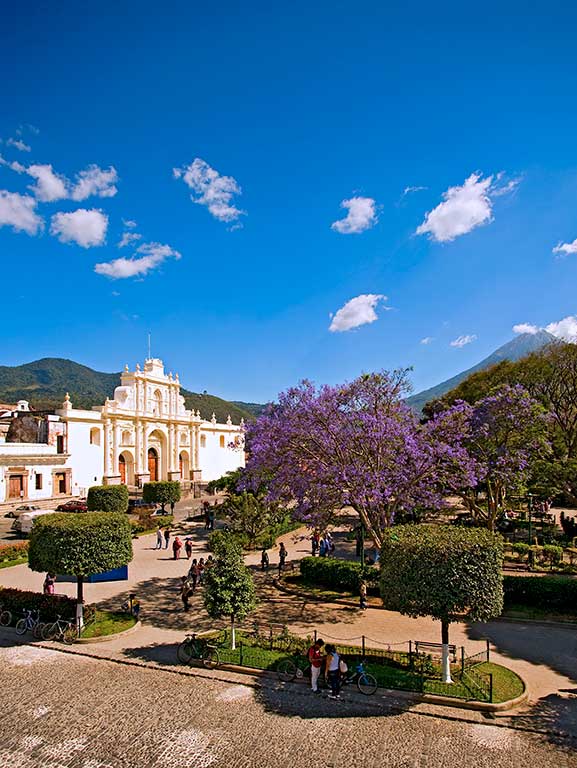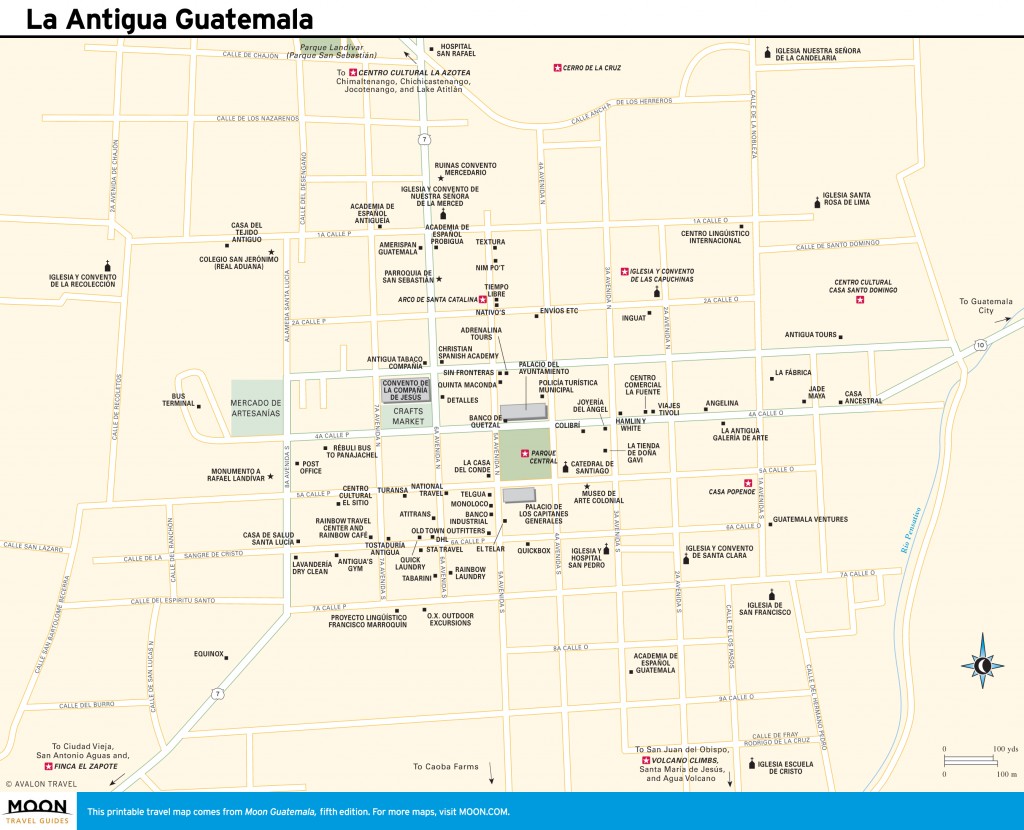Antigua’s central plaza is easily the most beautiful in Guatemala and forms the hub of activity for shoe shiners, strolling lovers, tour groups, ice cream vendors, and foreign visitors. Gracing the central part of the square is a lovely fountain dating to 1936, a re-creation of an earlier version from 1738 destroyed by earthquakes. It is bordered by the Catedral de Santiago, Palacio de los Capitanes Generales, Palacio del Ayuntamiento, and a commercial arcade known as the Portal del Comercio. The parque makes a great place for a stroll or people-watching from its park benches. At night, the surrounding buildings and monuments are beautifully illuminated.

Antigua’s lovely Parque Central. Photo © Al Argueta.
The current church is not really a cathedral in the strict sense of the word, as it consists of two restored chambers known as the Parroquia de San José. You can visit the interesting interior, where you’ll find splendid arches and towering columns. There is also a sculpted black Christ similar to the highly revered statue found in Esquipulas, both carved by Quirio Cataño. The remains of the rest of the colonial structure can also be seen here, a moss-covered mass of stones and rotting beams. The remains of some of the major players from colonial days are said to be buried beneath the church altar, including Don Pedro de Alvarado; his wife, Beatriz de la Cueva; Guatemala’s first bishop, Francisco Marroquín; and conqueror/chronicler Bernal Díaz del Castillo. Steps behind the main altar lead to the former crypt, now a chapel, harboring the black Christ statue.

La Antigua Guatemala
Found on the north side of the plaza, this large structure functioned as the town hall, also known as the Casa del Cabildo. It has miraculously withstood the test of time, resisting damage from earthquakes until the most recent one in 1976, despite its construction dating to 1740. Some fantastic views of the cathedral and Agua Volcano are framed by the Palacio del Ayuntamiento’s beautiful arches from its second-floor balconies. Perhaps a bigger draw than the historical building itself is the quite interesting colonial fountain embossed with the emblem of Santiago (St. James), found in a quiet courtyard. Next door, the Museo del Libro Antiguo (Antique Book Museum, tel. 7832-5511, 9am-4pm Tues.-Fri., 9am-noon and 2pm-4pm Sat.-Sun., $1.50) features exhibits on colonial printing and binding processes. There’s a replica of the country’s first printing press, brought to Guatemala in 1660 from Puebla, Mexico.
On the south end of the plaza, the Palacio de los Capitanes Generales or Palace of the Captains General dates to 1558 and was once the seat of government for the entire Central American territory from Chiapas to Costa Rica, of which Antigua was the capital, until 1773. Its imposing architecture is dominated by a row of 27 arches on both of its floors. It once housed colonial rulers, the royal mint, the judiciary, and tax offices, among other things. It has been recently restored and now houses a cultural center, after much debate about what its function would be. Among the attractions is Museo de Armas de Santiago (tel. 7832-2878, 9am-5pm Tues.-Sun., $4). It houses colonial artifacts, weapons (including cannons), historical paintings, and furnishings.
Excerpted from the Fifth Edition of Moon Guatemala.